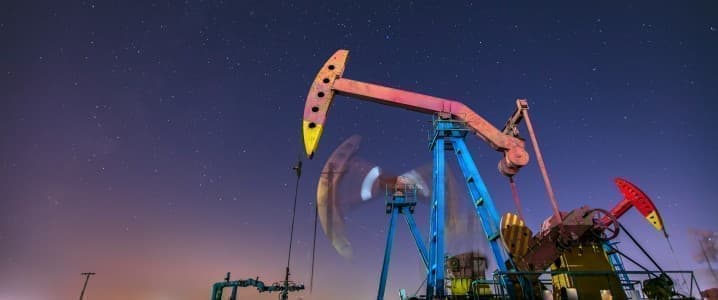During earnings season for the first quarter of the year, the message of the U.S. energy industry to the world was “Peak shale is here.” Now, three months later, the message has changed. Now, shale drillers are signaling there is still space to grow, so those expecting a decline after the peak will have to wait a bit longer.
“We believe we are at a tipping point for U.S. oil production at current commodity prices,” said Travis Stice, chief executive of Diamondback Energy back in May in a letter to shareholders. “The amount of capital required to get back to 13 million barrels a day or 6 million barrels a day in the Permian might be an untenable lift for the business model that we put in place,” Stice elaborated.
Now, the new chief executive of Diamondback is signaling this may not be the case. In comments on the company’s performance, Kaes Van’t Hof said that Diamondback was “pushing the limits of efficiency”, drilling new wells faster and cheaper, Bloomberg’s Javier Blas reported in his latest column, arguing rumors of shale’s peak were greatly exaggerated.
Indeed, earlier in the year, the Energy Information Administration reported estimates that total U.S. oil production would decline from 13.5 million barrels daily in the first half of 2025 to 13.3 million barrels daily by the end of next year. Drilling activity was slowing down faster than expected, the EIA said, citing rig count data. Prices were weighing on drillers, prompting revisions of new well drilling plans.
Yet just last month, the EIA had to revise its own forecast—because real-world data about oil production for May showed that shale drillers had kept expanding their production despite weaker international oil prices and despite a lower rig count. Granted, the growth was not bombastic, at 0.2% from the previous month, but on an annual basis, U.S. oil production gained 2.2% in May.
That, however, may not last very long. It normally takes several months before shale drillers respond to price weakness by curbing activity, and this year is no exception. Unless, that is, the demand outlook changes.
For much of this year, like last year, oil market commentary has focused on predictions of oversupply with a few sharp price swings following geopolitical events, suggesting that oversupply may be in jeopardy. Then there have been signs that there is no oversupply. The oil market is relatively balanced, and the chances of that balance tipping into the shortage direction are not insignificant, as some analysts noted after Trump’s latest tariff threat to India for its buying of Russian crude.
A slowdown in the energy transition is not helping reinforce the bearish sentiment. In fact, the transition has slowed so much that Wood Mackenzie has warned the world may find itself in urgent need of additional oil barrels. From 2035 onwards, the energy consultancy said recently, global oil demand might require an additional 5% more oil annually than previously estimated, due to the slower-than-planned transition. By 2050, we would need an extra 100 billion barrels of both oil and gas to balance supply with demand.
There is much talk about accelerating the transition, but the actual pace of switching oil and gas for wind and solar remains slow—which means there is a significant chance that the slowdown in U.S. shale is reversible as well. The moment prices tick up and stay up long enough, drillers will get their appetite for drilling back.
This is not to say there are no challenges that will be tricky to overcome. For starters, some in the oilfield services industry are warning that they have reached the limit for efficiency gains. “We’ve tripled oil production in the last 15 years, and we have doubled natural gas production.” But “there’s not a lot of gas left in the tank,” the chief executive of Quantum Energy Partners, Wil VanLoh, told Bloomberg back in September. “The US shale revolution has run its course.”
The limit of efficiency gains means there is no more space to lower costs by adding efficiency to drilling, which would make drillers more sensitive to prices. In other bad news for shale oil production growth, the Texas Railroad Commission has warned the industry that the amount of fracking fluid they were using was creating problems with ground pressure. For this reason, the commission earlier this year said it would restrict the number of new wastewater disposal licenses it issues to drillers.
Indeed, part of the efficiency gains the shale industry has developed over the past decade or so includes a significant increase in the amount of fracking fluid used. Per Enverus, it has gone up seven times over 15 years. And now it has to be moderated to avoid bigger problems.
All this limits the growth potential for shale deposits, for sure. But it does not cancel it altogether. Indeed, peak shale may get delayed yet.
By Irina Slav for Oilprice.com
More Top Reads From Oilprice.com

